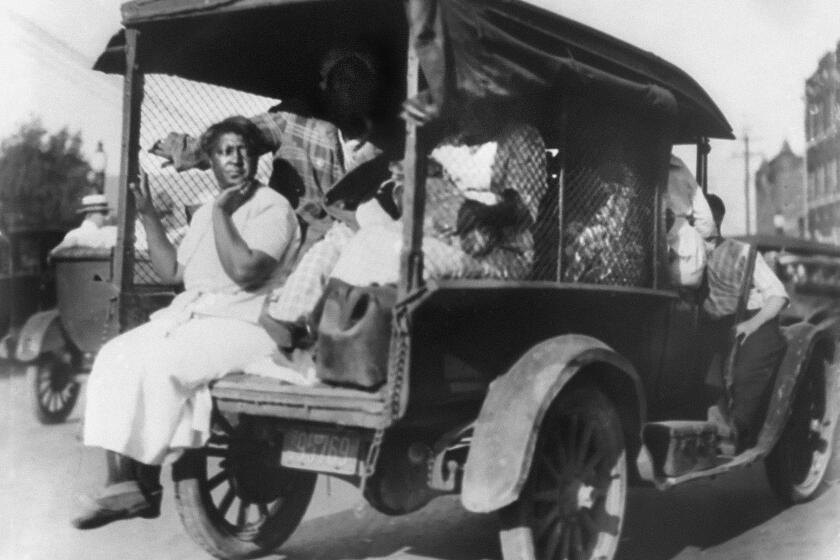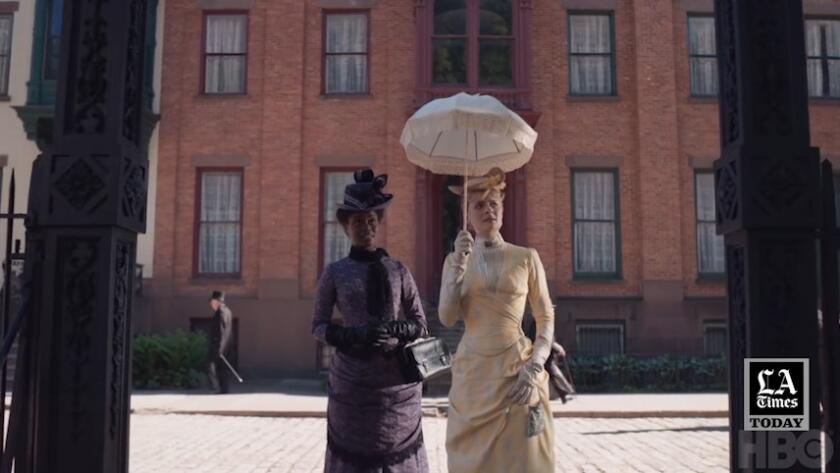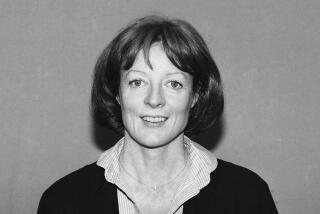How accurate is ‘The Gilded Age’s’ history of New York’s Black elite? We checked
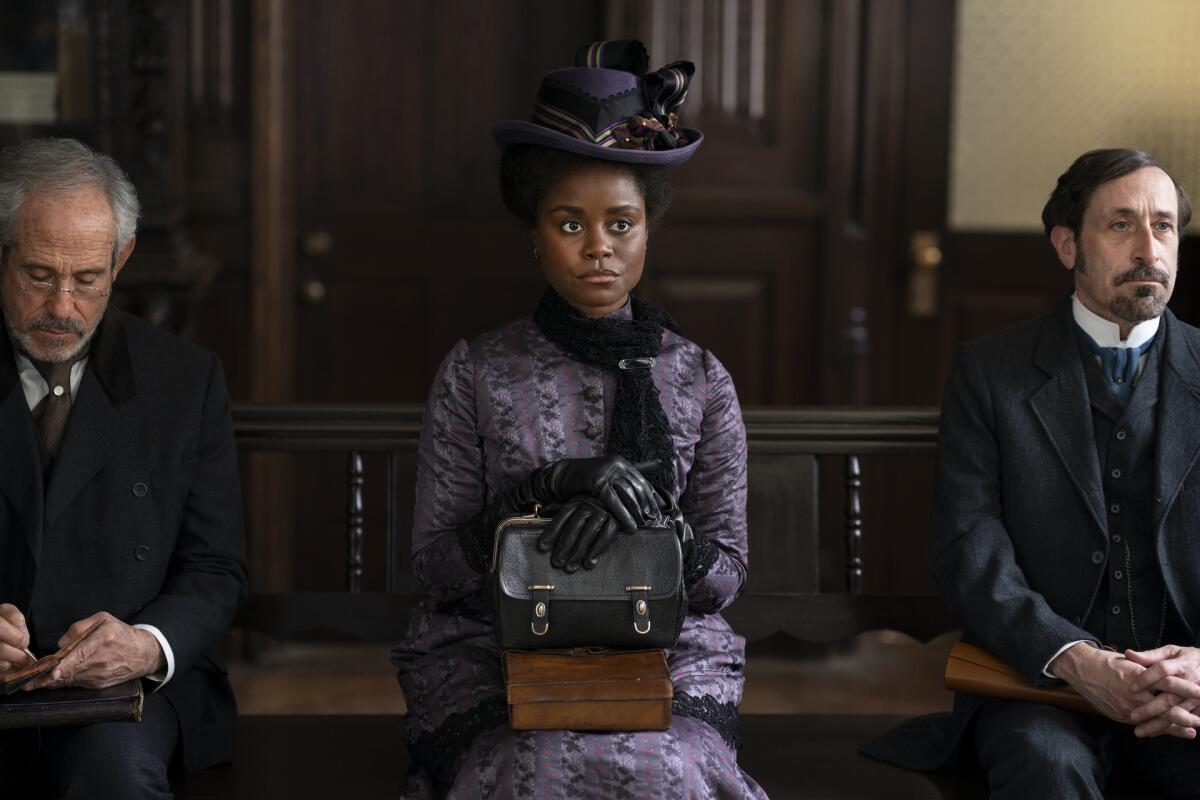
- Share via
Julian Fellowes may be TV’s pre-eminent chronicler of the British aristocracy, but his latest series, “The Gilded Age,” finds the writer in uncharted terrain: America.
The lavish HBO series, which premiered last month, is set in 1882 New York City. Taking a page or two from Edith Wharton, it centers on two wealthy families who live in neighboring mansions on Fifth Avenue and represent opposing forces in New York society: the Old Money Van Rhijns, who proudly tout their pre-Revolutionary roots, and the nouveau riche Russells, who are determined to use their railroad fortune to conquer Manhattan.
But in an unusual twist for this kind of society tale, “The Gilded Age” also follows the Scotts, a prominent Black family from Brooklyn that includes Peggy (Denée Benton), an aspiring writer who works as a secretary to the prickly Agnes van Rhijn (Christine Baranski).
“I wanted very much to make ‘The Gilded Age’ distinctively American,” Fellowes said. “And I didn’t believe I could do that without having a Black narrative and a Black family alongside the others. It just didn’t feel right to, actually.”
Several years earlier, Fellowes had read “Black Gotham,” in which author Carla Peterson traces her family history to the Black elite of 19th century New York. “I had no idea, really, that there was a prosperous, upper-middle-class Black community in New York towards the end of the 19th century, based not in Harlem, but in Brooklyn,” Fellowes said. “And these were affluent people with status and businesses and families.”
He decided it would be interesting to explore a Black family “who are established and prosperous and have a stake in this society.” Peggy, who strikes up an unlikely friendship with the Van Rhijns’ niece, Marian (Louisa Jacobson), clashes with her parents over her professional ambitions.
Fellowes typically writes his shows on his own, but for “The Gilded Age,” he shared duties with Sonja Warfield, a writer whose credits include “Will & Grace.”
“I think the depiction of Black people in television and film, especially in that time period, is usually relegated to those stories about slavery,” said Warfield, who is Black. “I have my own family stories, of great-grandparents who had some money, one of whom started a school. I thought, ‘These are stories that haven’t been told.’ That’s what really piqued my interest.”
Erica Armstrong Dunbar, a professor of history at Rutgers University whose work focuses on Black American women of the 18th and 19th centuries, was enlisted as a historical consultant and co-executive producer to help ensure authenticity and “do a sensitivity read as well,” she said. “It was very important for Julian Fellowes to have a world that was emblematic of what existed in the 1880s. And to do a show on the Gilded Age on this time period and to not include Black New Yorkers would be more than problematic.”
On a recent afternoon, the skies over Highclere Castle were a brilliant blue more reminiscent of Southern California than the Hampshire countryside, but otherwise things on location at “Downton Abbey” were characteristically English.
Dunbar started to work with Fellowes, Warfield and director/executive producer Salli Richardson-Whitfield on revising and expanding the Scott family storyline, which now includes a fascinating subplot about the 19th century Black press. They offered their perspectives as Black women and also as Americans on a show with a quintessentially English creator.
“I’m not American, and I need someone who can read what I’ve written and say, ‘Uh, no,’” said Fellowes.
“I always say that the behind-the-scenes story of ‘The Gilded Age’ is just as interesting as the show,” said Benton, who plays Peggy, “especially because of all the conversations we were having as a country around who holds power and how we share it. Our show was a really cool example of what can happen when you do.”
Here’s a look at the real history — and many creative conversations — that led to the Peggy we see in “The Gilded Age.”
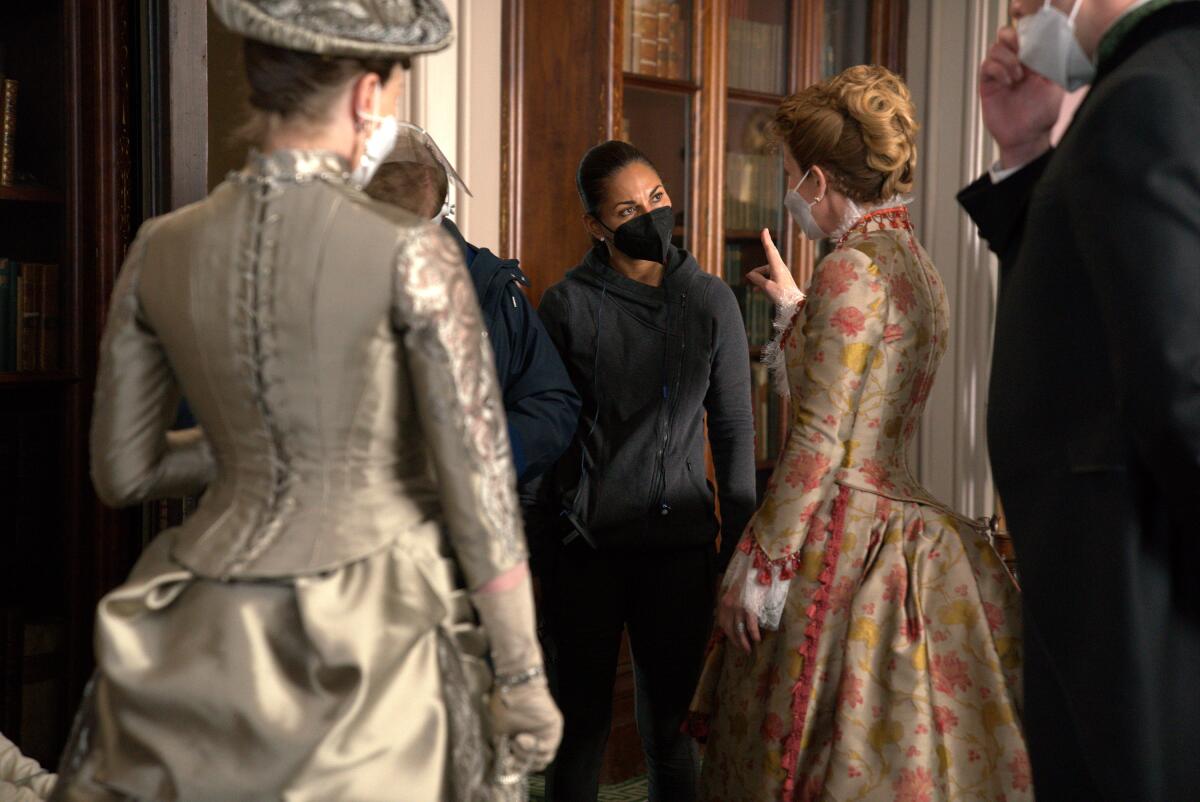
Peggy is inspired by several trailblazers, not a specific person
“Our biggest dilemma in the beginning was how to get Peggy in [the Van Rhijn] house working, so it made sense for the time period but also gave her character dignity, so that she wasn’t just a maid,” said Richardson-Whitfield. “That has been our big balancing act on the show: how do we keep the dignity of these characters but not make it so you’re going, ‘That would absolutely never happen.’”
The goal was to see “a Black woman who was educated after the Civil War and creating opportunities for herself.” We learn that Peggy attended the Institute for Colored Youth in Philadelphia, a real school that later became Cheyney University, one of the country’s first HBCUs.
They decided to make Peggy a writer, because it is “one area where women have been pretty successful for quite a long time,” said Fellowes. “Women were allowed to be novelists. They were allowed to be poets. And it didn’t seem to offend the masculine sensitivity in the same way.”
Peggy is not based on a single historical figure but is inspired by a number of real Black female trailblazers of the era. These include the renowned author and activist Ida B. Wells, who documented lynchings across the country and became one of the founders of the National Assn. for the Advancement of Colored People; Julia C. Collins, a Black teacher and writer from Pennsylvania whose incomplete book, “The Curse of Caste; or the Slave Bride,” is often cited as the first novel published by a Black American woman; and Susan McKinney Steward, the first Black female doctor in New York.
“Julian was intentional about drawing from multiple women’s lives in order to create a fictional character who embodies the spirit of the 1880s for young Black women in the elite,” Dunbar said.
Fellowes said he likes to have real-life models for his fictional characters because it allows him to defend them as truth: “I needed to know that a girl like Peggy existed and wanted to be a novelist, and she did.”
Benton, who grew up in a middle-class Black family in Florida that prized education, said she related to her character and “the pressure to make your parents proud, while also really getting to lean into the freedom that they fought for you to have, even if it’s outside of what they imagined for you.”
Denton also identified with the pressure of respectability politics that Peggy faces on a daily basis. “As a Black woman in America, you need to wear your hair certain ways and to speak a certain way. You need to prove your humanity, at all costs, at all times. And if you ever drop the ball, the stakes are just so high.”

Yes, there were interracial friendships like Peggy and Marian’s. But not many
In “Downton Abbey,” Fellowes often depicted friendships between the upper class and members of their staff. Likewise, “The Gilded Age” revolves around the mostly warm relationship between Marian and Peggy — two young women who share many frustrations but are separated by race. The creative team had many conversations about how to ensure that their friendship was special but also authentic to the times.
Such relationships were not entirely unheard of, Dunbar said, citing “the letters of white suffragists, women who had deep relationships with Black women, from the era of abolition up through the early 20th century.”
The writers were particularly concerned with how a Black woman like Peggy would come into contact with a white woman like Marian, since they would not attend the same churches or visit the same cafes — places where women might have encountered each other in the 1880s. They settled on having Peggy rescue Marian, whose purse is stolen as she waits on a train platform.
“We wanted to avoid the white savior thing,” Fellowes said. “So Peggy saves Marian, rather than the other way around, which is what it would have been 10 years ago.”
“Viewers will see this relationship and understand it as a friendship that’s limited, a friendship that exists as best it can in a world that’s still that segregated,” Dunbar said. “It’s definitely a friendship that develops. But it’s one that was not based on equity, to be perfectly honest.”
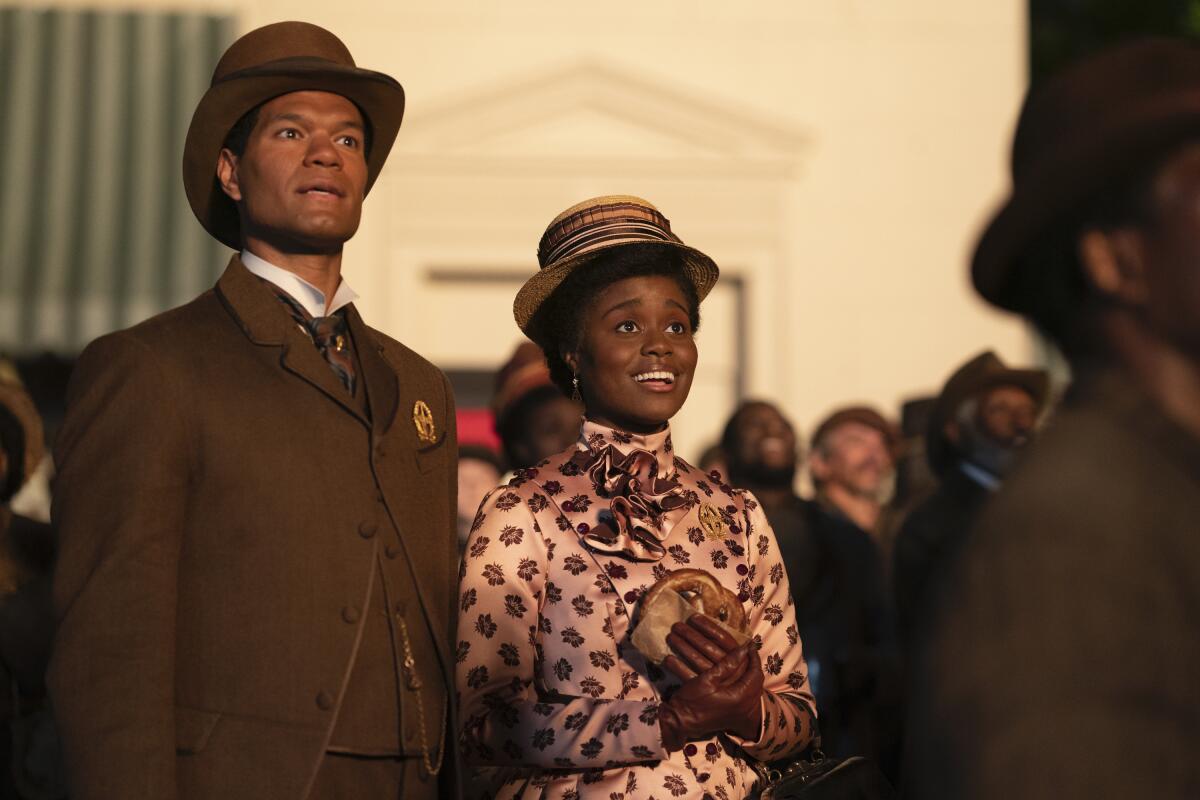
The Scotts are part of a small but thriving Black elite that lived in New York City in the 19th century
The draft riots of 1863, during which many Black people were beaten or had their houses set ablaze, triggered a “Black Exodus” from Lower Manhattan to Brooklyn, Dunbar said. This led to “self-sustaining Black communities” in places like Fort Greene and Williamsburg, where Black businesses and institutions all thrived.
Peggy’s father, Arthur, a prominent Brooklyn pharmacist, is inspired by Philip Augustus White, a real-life figure in “Black Gotham.” In the book, Peterson uses her family history to explore New York’s Black community in the 19th century. The presence of men like White, her great-great-grandfather, “overturns the commonly held notion that New York’s Black intellectual and cultural life began in Harlem” in the 1920s, Peterson wrote.
An upcoming episode of “The Gilded Age” illustrates this idea by taking us to the Scott family’s stately home in Brooklyn, where Peggy and her parents are waited on by servants.
“Peggy comes from a family that clearly registers in the Black elite,” said Dunbar. “That’s not to suggest that all Black people in the 1880s are living that way; they’re not. But it’s an important parallel to the other themes of the show — white wealth, the struggle for power, this tug between old money and new money. Well, there’s a Black elite that develops along a parallel track.”
“The Gilded Age” is set less than two decades after the end of slavery. At one point, Peggy’s father refers to an uncle who was sold off before Emancipation and never heard from again.
During this period of tenuous freedom, Dunbar said, there was a “desire to create a Black elite that respected and centered things like education, thrift, religious piety — things that would perhaps add to the arsenal to protect themselves from racial discrimination.”
But they faced the indignities of racial discrimination anyway, said Dunbar: “The Black elite in New York are pushing up against segregated schools, and they are fighting about carriage drivers who refuse to pick them up.”
“If we didn’t approach the Black elite world in a way that was really authentic, then people would just disregard it and, and go, ‘Well, they made that up for TV,’” said Richardson-Whitfield. “This is the people that we were back then. The more money they got, the more influence they got, people tried to rip it from them.”
Benton has also found it empowering to learn about Black people in the Gilded Age and “the Black Wall Streets of the world,” she said. “You’re like, ‘Oh, we’ve always existed, but white supremacy really thrives on forgetfulness.’ There’s something insidiously powerful in continuing to disconnect us from those stories.”
Hollywood execs once dismissed the idea of mass interest in the 1921 Tulsa Race Massacre, but the success of HBO’s Emmy-winning series breathed life into a raft of documentaries.
Segregation and racial antagonism were by no means relegated to the South
In Episode 3, Peggy and her father, Arthur (John Douglas Thompson), are having a conversation on the sidewalk and step aside to let a white couple pass. The scene is “a reminder that the Civil War and attitudes about slavery and race were far from long gone,” said Dunbar. “There were many incidents of racial antagonism and violence directed towards Black New Yorkers.”
She cited the example of journalist T. Thomas Fortune — a character introduced in later episodes of “The Gilded Age” — who in 1890 “was physically thrown out of the Trainor Hotel and arrested because he dared to contest segregation.”
“In 1883, around the time of our show, the United States Supreme Court ruled that the Civil Rights Act of 1875, which forbid discrimination in hotels, trains and other public spaces, was unconstitutional and not authorized by the 13th and 14th amendments,” she said. “This opened the door for white Southerners and Northerners to behave as they wished.”
Black people would have been even more likely to encounter hostility when they ventured into white neighborhoods like the Upper East Side of Manhattan, home to the Russells and Van Rhijns.
“When we think about the North in the popular imagination, it’s the land of milk and honey. In reality, the color line was becoming much more rigid during the Gilded Age,” said Dunbar. “Our characters — Peggy in particular — have to maneuver in order to thrive.”
Dunbar notes that historians who write about Black people during this era do not call it the Gilded Age; rather, they refer to it as the nadir in race relations, because rights that had supposedly been won after the Civil War were contracting throughout both the South and the North.
The press played a crucial role in Black life in the late 19th century
One major addition to “The Gilded Age” is a storyline about the Black press. As seen in Episode 3, Peggy refuses to write for the white newspaper, the Christian Advocate, because its editor wants her to write under a pen name and alter her story so that its protagonist is white. She later decides to write for the New York Globe, a Black newspaper run by Fortune (played by Sullivan Jones).
Fortune (first name: Timothy) is a real historical figure who is often referred to as the dean of Black journalism. Born into slavery, he was a close associate of Booker T. Washington, who founded the Globe — which later became the New York Age and was one of the most prominent Black papers in the country.
“He was committed to having this newspaper really focus on issues that have to do specifically with Black people,” Dunbar said. During the post-Civil War era, “literacy becomes super important, because it had been denied legally for hundreds of years. We’re still in 1880, at a moment where we’re attempting to catch up,” Dunbar said. So it was crucial “to have an outlet such as the Globe that talked about Black life and informed Black folks across the nation.”
- Share via
Watch L.A. Times Today at 7 p.m. on Spectrum News 1 on Channel 1 or live stream on the Spectrum News App. Palos Verdes Peninsula and Orange County viewers can watch on Cox Systems on channel 99.
More to Read
The complete guide to home viewing
Get Screen Gab for everything about the TV shows and streaming movies everyone’s talking about.
You may occasionally receive promotional content from the Los Angeles Times.

